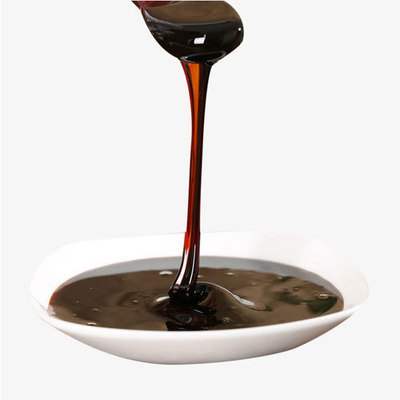That massive spike of 50c/kWh at the left looks tiny compared to today even though that’s already insanely expensive
Honestly doesn’t seem that bad if it’s just for one day. Maybe invest in something more sustainable in the future?
Maybe invest in something more sustainable in the future?
Like what?
And with what money? It’s all going to electricity at the moment!
deleted by creator
I think he was joking, like making look like a bad investment instead of a electricity bill
Get her a space heater, you won’t even notice the difference in your bill.
I recommend getting one that blows air instead of one that just heats oil. I’ve used both types, and the one that blows air is way more effective.
/s
No, I’m talking from experience.
It’s the difference between an additional $5 and $70 in my electric bill every month.
Staying warm is not the issue. It’s the price for that comfort. Running a 1kW space heater for 24 hours at yesterday’s prices would have cost a little over 26 euros.
Tomorrow is back to normal. Even the 37c/kWh spike hardly registers on the graph compared to today even though that’s still pretty expensive.

40c/kWh is a pretty normal price here in Germany…
Ironically, prices are high, because of too much extremely cheap renewables.
Bullshit. Check the prices around Christmas last year, Germany was running only on renewables on the 24th and I paid .19€/kWh all day long then.

Do you really think, that’s what anyone pays? Because that’s not how consumer contracts work. You’re paying whatever you agreed upon when signing the contract.
Source: https://www.stromauskunft.de/strompreise/
This was literally 10s of google. Is that so hard?
Yes, that’s what I pay. That’s what my contract works like.
And on average, you’ll pay just as much as everyone else. If prices go through the roof, you’ll get screwed. See 2022.
Nope. More than 80% of my usage comes from heating and driving and I’ve heavily optimized car charging and heat buffering to make use of low cost times.
Heating can only be optimized for about 24h periods, that’s why I can supplement my heating with wood from my own forest.
Driving, between April and October pretty much only happens using electricity from my own roof, between May and September the entire house uses less than 100kWh from the grid.
Before I signed at Tibber, I had of course compared my recorded load profiles including simulations for automated usage optimization against EPEX 60min day-ahead prices and I would have been at less than 0.23€/kWh on average since 2020, including the high prices of 2022.
Are you actually paying the daily spot price? Not a flat amount with the utility provider taking the hit? That’s how I know it from any other country, unless you have a specific contract where the user made an informed decision to opt for market rates.
Yeah about 30% of Finns have a plan lile that. It’s bit of an gamble, but on average it’ll be cheaper on the long run.
Mainly the reason is that many countries do not have hourly capable meters, so calculating the price for each hour is not possible. Flat rate is needed when you just have the cumulative read once a month.
In Finland the meters communicate automatically once a day, and send the 24h values to grid company. The next generation meters which are now installed can communicate once a hour.
30% of Finns are on spot.
Oh interesting, never knew that’s a thing. Sounds mostly like a good development to make people more conscious about their consumption.
Sounds more like an incentive to put up solar panels and battery storage. Even if it isn’t enough to go off grid totally, you can at least store on cheap days.
Spot is quite normal in the Nordics. Over all it’s the cheapest, but some days suck obviously.
This summer we had days with negative prices. My bill for July was 78 NOK (about $8). Might have been August when I think about it…
It peaked there right? So the rest of the day it was lower wasn’t it? Still very expensive!
Average price for the whole day was around 1.1€/kWh
Crazy how it is with dynamic electricity price. Must be extremely inconvenient to monitor and react!
Here a border away in Saint Petersburg, Russia, we have electricity at a fixed rate of 4,9c/kWh in daytime and 2,7c/kWh in the night. There aren’t any variable price tariffs in here, so the bill is always about the same.
We also have central heating (part coal/gas, part nuclear) that goes for 21€/Gcal (1,8с/kWh), so there is no need to expend electricity.
You need to seriously need to rethink your home. First off, consider getting a radiator heater. These heaters have no fan and are filled with oil to passively heat the air. They are pretty efficient and can heat a small space.
Next make sure you have blinds covering all windows. Windows loss a lot of heat even if they are double paned.
In the spring time it may be worth getting some insulation blown in.
You’re talking to a guy living in Finland. I think it’s safe to say they know how to efficiently stay warm in winter.
My heatpump is about 3x more efficient than electric radiator.
Is heating with electricity common in Finland? That seems like it would cost a fortune even in good times.
Pretty common here in France and it’s cheap enough. Why would you think it would be expensive? And expensive compared to what?
When you say it’s common, are you talking about heat pumps or old-fashioned resistive heating? I’m not very familiar with heat pumps since they weren’t common at all when and where I bought a house, but at least where I lived it was normal to have either an oil or a gas furnace for heating. Resistive electric heating cost a lot more to operate and so it was generally used only where it would be too difficult or expensive to install a furnace and hot water pipes or hot air ducts. For example, some friends of mine lived in a 19th century house which was meant to be heated by a wood fireplace and they also had electric heaters in the bedrooms, whereas my own house was built in 1980 so it had an oil tank, a furnace in the basement, and hot-water radiators.
(My own house also had a modern wood stove in the living room and buying firewood was even cheaper than buying heating oil, but the problem was that the wood stove took a lot of work and it only heated the living room since it wasn’t connected to any mechanism for spreading the heat to the rest of the house.)
I was talking about the old-fashion one. It’s really common across France even though modern housing have heat pumps. Oil furnaces have almost completely disappeared and the gas one are in the process of being replaced as well. Electricity is cheaper here than in most countries (thanks to nuclear power plants).
Heat pumps have been commonplace outside North America for a long time. We call them “reverse cycle air conditioners” in Australia and they’ve been around for at least 20 years.
It’s not new technology. Your fridge is also a heat pump for example.
Older houses burn oil for heating the house and water but even most of them have heatpumps installed. New houses usually also have heatpumps or geothermal so direct electric heating is more and more uncommon. Apartment buildings generally all have district heating and even some private homes do.
Yes it’s expensive but so is everything else too. Our houses are way better insulated than in most places though so that helps a little.
Geothermal is expensive and not worth it financially in many countries but when you are looking at 2.35€/kWh it seems like a great investment.
He doesn’t mean geothermal in large scale but home level geothermal. It is actually very cheap and efficient technology.
Over half of the new houses in Finland are build with geothermal. It costs roughly 18 000€ to construct.
He doesn’t mean geothermal in large scale but home level geothermal. It is actually very cheap and efficient technology.
I understand, but it’s not cheap when compared to solar
Solar panels doesn’t provide heat, it produces electricity. Also it is quite common on Finland to have solar panels + geothermal heating, because both of them pay for themself in 5-10 years. Unfortunately solar panels do not provide us enough electricity to be only source, not even with batteries.
deleted by creator
Overall electricity is relatively cheap in Finland. Historically they were oil heated, which is not very cheap either.
We do not have gas lines in Finland, so we cannot use that like other parts of Europe. This is now of course better because we are not depending on Russian gas.
Previously we got parts of electricity from Russia, but that shutdown after the Ukraine war.
Ouch.
Meanwhile, in Portugal, my peak energy price will be around €.10, with the minimum at around €.06
To what degree is your house insulated already?
-40 is eye buggingly cold. You could have a styrofoam house and I would still worry about being cold in it, plus y’know, the giant fire hazard.
Well after lighting the styrofoam you won’t feel cold anymore
But I like feeling vijif!
Lol I don’t know how that got autocorrected. Dutch is a funny language, but that isn’t a word…
Saves a pretty penny on refrigerating stuff but makes for a hard time to have a decent night of sleep.
And your remark on styrofoam hits hard with me.
I have an old house, nearly 100 years old, with a very poor score in thermal efficiency, that really needs some improvement but the idea of glueing highly combustible materials to the walls does not go well with me.
At least you can quick chill a beer!
I can’t drink…
At least you can quick chill a soda!
There’s that, I’ll admit.
It’s crazy. I’ve been doing all my insulation calculations based on a delta of 20 (20 inside, 0 outside).
To hit the same heating requirement, I’d need to triple the amount of insulation for -40.
Normal energy price in Finland around 0,04€ - 0,10€/kWh. Last year average was 0,068€/kWh
That’s extremely cheap, compared to 0,35€ in Germany.
That is really nice.
It’s a log cabin with 5cm added fibreglass insulation on the inside.
That’s a lot. And being a log cabin I wouldn’t add anything on the outside that would hide the wood. That is really harsh weather to endure.
How’s the heat pump gang doing in that kind of temperature?
They should be using supplement heat sources at that temperature.
Since it’s a cold area, they’re likely using a geothermal heat pump, which isn’t affected by air temperature. It uses the ground for heat exchange rather than the air.
Some of the modern air-source heat pumps can operate down to those temperatures. https://carbonswitch.com/best-cold-climate-heat-pump/
You’re right though, geothermal would be more likely currently and if that’s the case then the heat pump gang is doing just fine.
Definitely. I live in the San Francisco Bay Area where it doesn’t get too hot nor too cold, but I do still need heating during winter, and occasionally air conditioning during summer (maybe for 3 weeks or so, sporadically turning on during the day).
I bought the cheapest heat pump I could find that would work with my existing Ecobee thermostat (a Gree Flexx), and even that one says it’ll work down to -22F with a 1.25 COP
I’ve got solar panels, which made a heat pump a better choice than a new gas furnace.
It’s what I exclusively heat my house with
They are mostly ground source over there, which shouldn’t be affected by cold snaps.
I honestly don’t understand. Isn’t Finland one of the countries who should have figured out how to heat a home efficiently a long time ago?
Title
Jj

Yukhh
i keep a pile of coal in the cellar for the extra cold days
And then you just burn them in a pot on your table and breathe the exhaust?
To do what with? Light a coal fire in the living room?
It doesn’t sound safe even in a proper fireplace.
found one whose never felt the heat of a coal stove
it’s handy to have backup heat source when the power goes out so pipes don’t freeze
Nope, I am far too young for that.
I have never heard of anyone that currently has a coal-heated house. I thought it was entirely dead in the developed world. Here these heating options are common district heating, geothermal, direct electric heating, some other kind of heat pump, biofuel (like pellets), and a tiny bit of oil and gas.
The most popular by far is district heating, after that comes electric heating (which includes electricity used for geothermal heat pumps and other kinds) and then biofuel. Gas and oil are barely visible on a graph.
I just tried to find a place in my country which sells coal for heating but alas I didn’t succeed. You can of course buy coal but its intended purpose is always grilling or smithing.
I have electric! The coal stove is backup, some people use wood as a backup. It’s not uncommon
Your thinking of charcoal, which are chunks of wood converted into almost pure carbon by heating them above their combustion temperature in a low oxygen environment. He was talking about coal that was mined out of the ground. Plants from an ancient swamps that didn’t decompose, but were converted into almost pure carbon from millions of years of heat and pressure from being buried.
No.
I don’t think any type of coal heating has existed for homes in quite a long time in my country.
I honestly thought it was phased out decades ago in pretty much the entire western world.
50 Euros a day is insane. That’s a good portion of what I pay for a whole month.
Lucky you. 175 square meters, 25cm styrofoam on walls and 30cm rock wool on ceiling and I pay 200€ per month in winter for gas heating in Poland. Solar panels are not economical in current regulations and billing rules have changed so those with heat pumps pay at least twice us much in coldest months.
We are fucked from every angle.
Get a space heater.
Mine was $15 at Walmart, heats my room like it’s Spring, and only adds $5 per month to my electricity bill.
Come Summer, I’m going to get a dehumidifier and see if I can use it in place of my A/C.
Bruh, a space heater is the least efficient way to heat a space, unless electricity somehow costs less per MWh than gas (that is insanely cheap and only true in a few key places in the world).
Also dehumidifiers… don’t do what you think they do? They are basically an A/C unit, that dump the hot air in the room they sit in. Literally worse than nothing.
*Re-*humidifiers have marginal benefits in (very) dry weather as evaporation is endothermic. As soon as the air is even somewhat humid though, they’re literally worse than nothing again.It’s not inefficient if it makes you feel warm. Often you don’t really need to warm everything in a house to be comfortable. It might make sense to do so in a situation when electricity goes out/grid is unreliable and you don’t have a thermal battery to ride on for a few hours, or you want to keep your water pipes warm enough so they don’t freeze.
But I know a lot of people who choose to forego so much heating, keeping their space to like <15/59, and have a heated blanket or space heater/fireplace entertainment center.
Feel like this works best in a shared living situation though, like an apartment or town home. For detached situations, maybe it does make sense to keep things relatively warm in case of emergencies.
They were talking about consistently heating a whole room though. I guess there’s a case to be made if the thermostat for the central gas heating is in another room and can’t be moved… But you should probably organize your heating so that this is a corner case (which is why the thermostat is typically in the living room in detached living. Other rooms don’t usually need to be kept particularly warm).
Of course if you have a badly insulated house and no way to properly distribute the central heating or to pay to heat the whole space to 18 °C, use resistive if you must. But that goes against everything that central heating is supposed to be for.
Also you really should not let a building go under 15 °C. It depends on the specifics (insulation, ventilation), but you’re liable to get mold or other kinds of water damage due to condensation.
Good points. There are a variety of houses/buildings built during various periods of time according to various codes and standards, but if you’re within city limits (US/Canada) then your house was probably built after the 70s/80s and has decent insulation. If there is an issue with the central heating in that kind of home, I 100% agree that there’s an issue that you might want a GC to fix. If your house/building is old, or if landlords don’t want to fix shit (and complaints are too much of a hassle), then I can also see that space heating can be a reasonable bandaid: at least until you get out of that situation.
Condensation is something I also forgot. That’s important for you electrical system too. In my experience in electric distribution/collection, usually we’d want to keep termination points around 20/68, but thermostats could drop to as low as 10/50 before kicking in. Certainly keeping a house colder than 10/50 is a bad idea, but between that and normal 20/68 I’d think would be fine. You also have the risk though that your thermostat is a single point of measurement for the system. Other parts of a house might be cooler/warmer, so I’d agree with the advice to keeping your house warmer than 15/59, unless it supports multi-unit dwellings.
Good convo, cheers
wow! i paid 220euros for gas heating and warm water in 78m2 flat in poland for all last year.
Yeah I lived in flats before, it’s a totally different story, unless your flat is on the last floor or on the corner there is not much heat loss assuming your neighbors also use the heating.
not really… my flat is in corner. Gave 3 sides, nirth, east, and south. No other flatsconnected with mine. And to this, flat under mine is empty, nobody is living there.
Then I don’t know why, but I am sure over 30% of heat in my house escapes through the roof.
hey, whats the price for gas per cubic meter in Poland?
Invoice from yesterday for December 2023. I used 201 m3 of gas, calculated by provider as being equal to 2224kWh of power for which I paid 682.81 PLN (157 € to be exact) in total including taxes and surcharges. So 3.397 PLN or around 0.78 EUR per m3.
December was one of the coldest months this season. Last year I used maximum of 250 m3 per month which happened to be January/February. This then exceeded 200€
This includes both warm water and heating using low-temperature floor heating. Current thermostat settings give me 22C on the base floor and 20C on the first floor (where most heat escapes, obviously). I also have mechanical ventilation with recuperation.
Shit’s expensive.
With current prices of electricity, the same heating power with perfect constant COP of 3 (not possible with December temps for air heat pump) would cost me 666 PLN. (Nice). How can I offset the cost of installing it in the first place LOL.
i hear you, current rate in Lithuania is 0.87 eur :(
I will never complain about paying 33¢/kWh for 3 hours a day in the summer ever again.
Many are going to pay 200€ today
Part of it was faulty pricing from a Norwegian electricity exporter. Also, they have almost finished the new infrastructure, so they do not have to import as much in crisis situations. I think a new nuclear power plant goes online and lots of renewable stuff. The problem OP is maybe talking about seems to be very well handled by the state and already solved. https://www.helsinkitimes.fi/finland/finland-news/domestic/24708-electricity-prices-in-finland-return-to-normal-levels-in-2023-down-64-from-previous-year.html
What was the price before the Ukrainian war?
You could get fixed price plans for around 5c/kwh. However take into account that yesterday was an anomaly. The average price for the last 28 days is 12.65c/kWh. During the summer time it was around 1 to 3c/kWh.
That is an insane price, and it feels like it should be illegal.
Further integration at an EU level would allow energy supply to be less influenced by local issues.
Spot rate pricing for electricity is uncommon among households for exactly this reason. The price is most likely the result of energy market conditions, rather than nefarious actors in the market intentionally manipulating market conditions.
Usually there’s a company that would be absorbing that risk of price fluctuations by charging slightly more than the baseline normal so that they can afford to charge households at a loss for the short periods where the price spikes as insanely as this.














